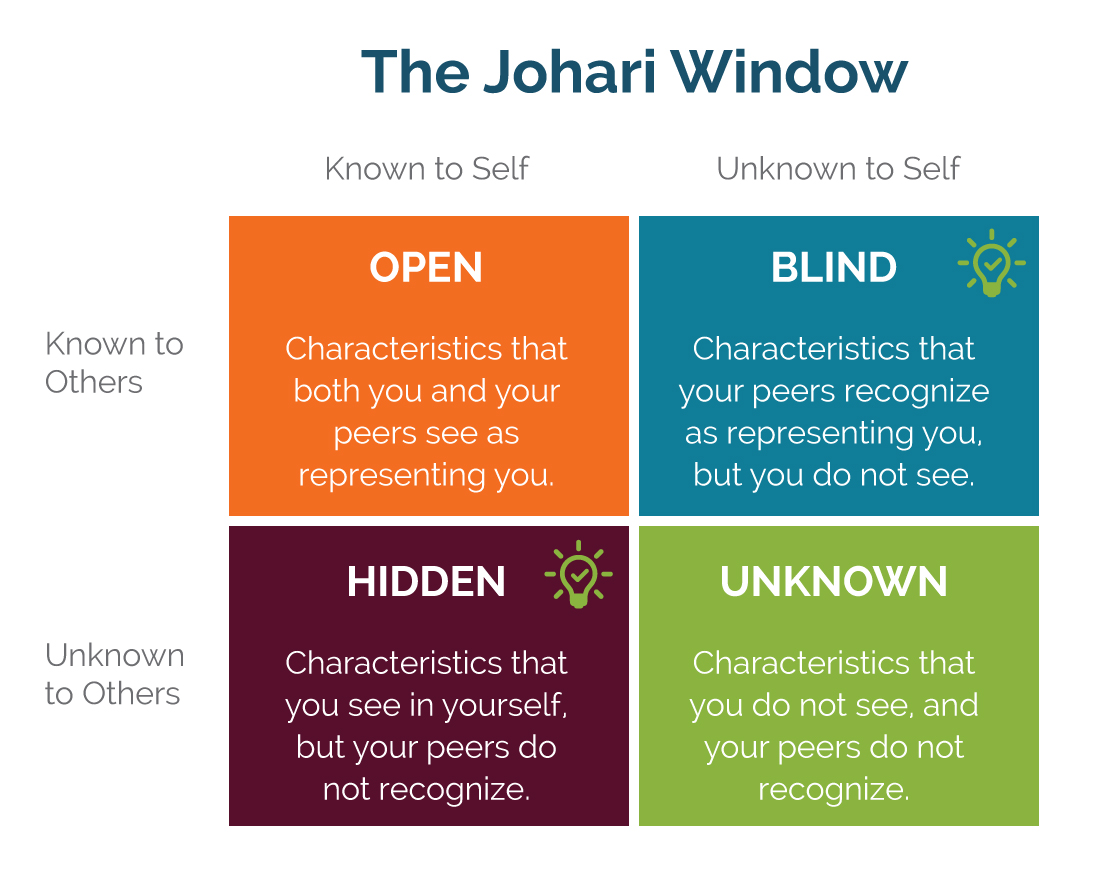A recent Business News Daily article on politics in the workplace discussed how it affects, and can even destroy your business. That got us thinking. What if people don’t realize that they are part of politics in the office?
- What if we see our good traits, but are unable to see the traits that cause other colleagues stress?
- How would someone be able to figure that out — and more importantly learn from it to adapt future behavior?
As we head into a new year, it is a perfect time to think about self-improvement and being more effective at work. This applies to both you improving as a leader, and improving your team’s dynamics. While you could just complete this exercise on your own, it could also be effective (and fun!) as a one-on-one coaching exercise with individual team members.
How to understand your good and bad traits
To answer the questions posed above, we went back to our psychology days to camp out and think about a common technique called The Johari Window that was designed to help people better understand their relationship with themselves and others. It was created by psychologists Joseph Luft and Harrington Ingham in 1955. Fun fact: The name for the model “Johari” is a combination of their first names.
The Johari Window contains four quadrants defined as follows:
Open
Characteristics that both you and your peers see as representing you.
Blind
Characteristics that your peers recognize as representing you, but you do not see these characteristics.
Hidden
Characteristics that you see in yourself, but your peers do not recognize.
Unknown
Characteristics that you do not see, and your peers do not recognize.
In addition to the four quadrants, the Johari Window has a list of 56 predefined characteristics. Here is a link to that list Johari Adjectives | PDF | Psychological Concepts | Psychology (scribd.com)
Use the four quadrants and the predefined adjective characteristic list to understand more clearly those traits that you see vs. what others see.
To do this, we recommend you take the following steps:
STEP ONE: Self-Evaluate
Review the 56 predefined adjective characteristic traits and circle all of the ones that you believe apply to you.
STEP TWO: Focus on Your Top 12 Traits
Go back to your circled words and force yourself to select only the Top 12 that you feel best describe your characteristics in the workplace.
Important Note: Sometimes your characteristics in the workplace might differ from the characteristics that describe you overall, or in your personal life. Take an extra moment to choose the Top 12 that you think best define you at work.
STEP THREE: Get Other Opinions
Ask at least five different current, or former work colleagues (who know you well, and who you know will be honest with you), to look at the same 56 predefined adjective characteristics, and choose the Top 12 that they think best describe you at work. Emphasize that you are looking for an overall composite and not just twelve flattering characteristics.
STEP FOUR: Compare the Responses
Compare your Top 12 to your colleagues’ Top 12 selections. Specifically think about:
- Any items that were not circled at all by you in your original list, but were mentioned by any of your colleagues. These might be bigger blind spot areas that fall in the Blind quadrant.
- Any items in your Top 12 list that were not mentioned by your colleagues. These can represent areas in the Hidden quadrant.
- While Known and Unknown traits can be helpful to identify, focusing on the Hidden and Blind traits are likely to yield better results for growth overall.
- Hidden and Blind traits can also be good indicators of your role in office politics – be it obvious, or a new insight for you.
STEP FIVE: Consider the Reasons Behind the Differences In Your View vs. Your Colleagues’ Views
For either Blind or Hidden quadrant items, take time to think about reasons why there are differences in your view vs. your colleagues’ view. Is there room for improvement? Where possible, think of follow up questions that you can ask colleagues to gain more clarity.
STEP SIX: Reconnect with Your Colleagues
The final step is to reconnect with your colleagues individually and share your results and thoughts. Ask them to comment specifically on two or three things that you can do to be more effective or productive when working with others. Take the time to really listen to their advice and determine how to apply it in the future.
With another year coming to a close, take time to get 2022 on the right track with some simple self-reflection that will help you become more effective in the new year, while neutralizing some of those office politics.
Happy holidays everyone!
Contact Us Today
We make it easy to jump start success. Simply contact us and share your current team challenge or need, and we’ll respond with program ideas to innovate your team performance.


